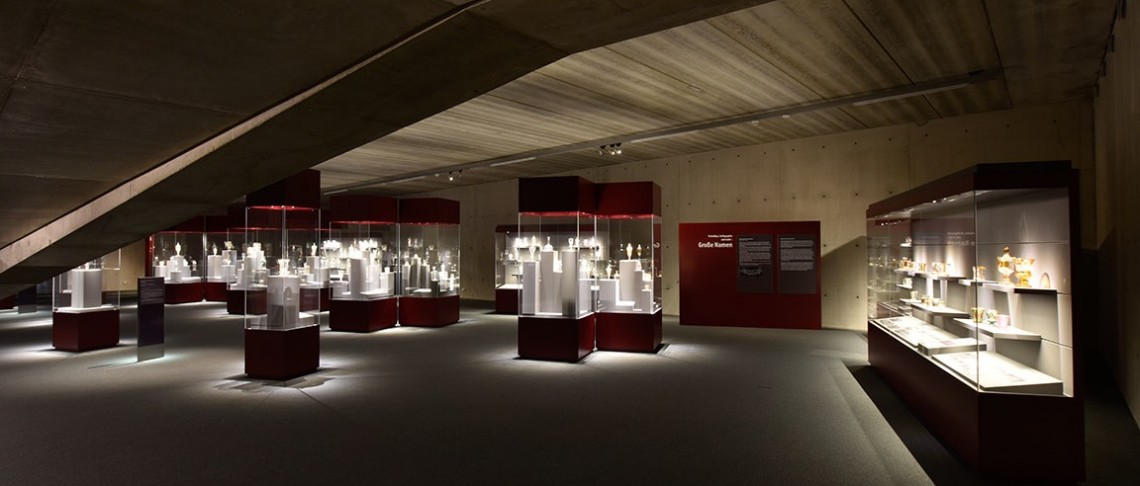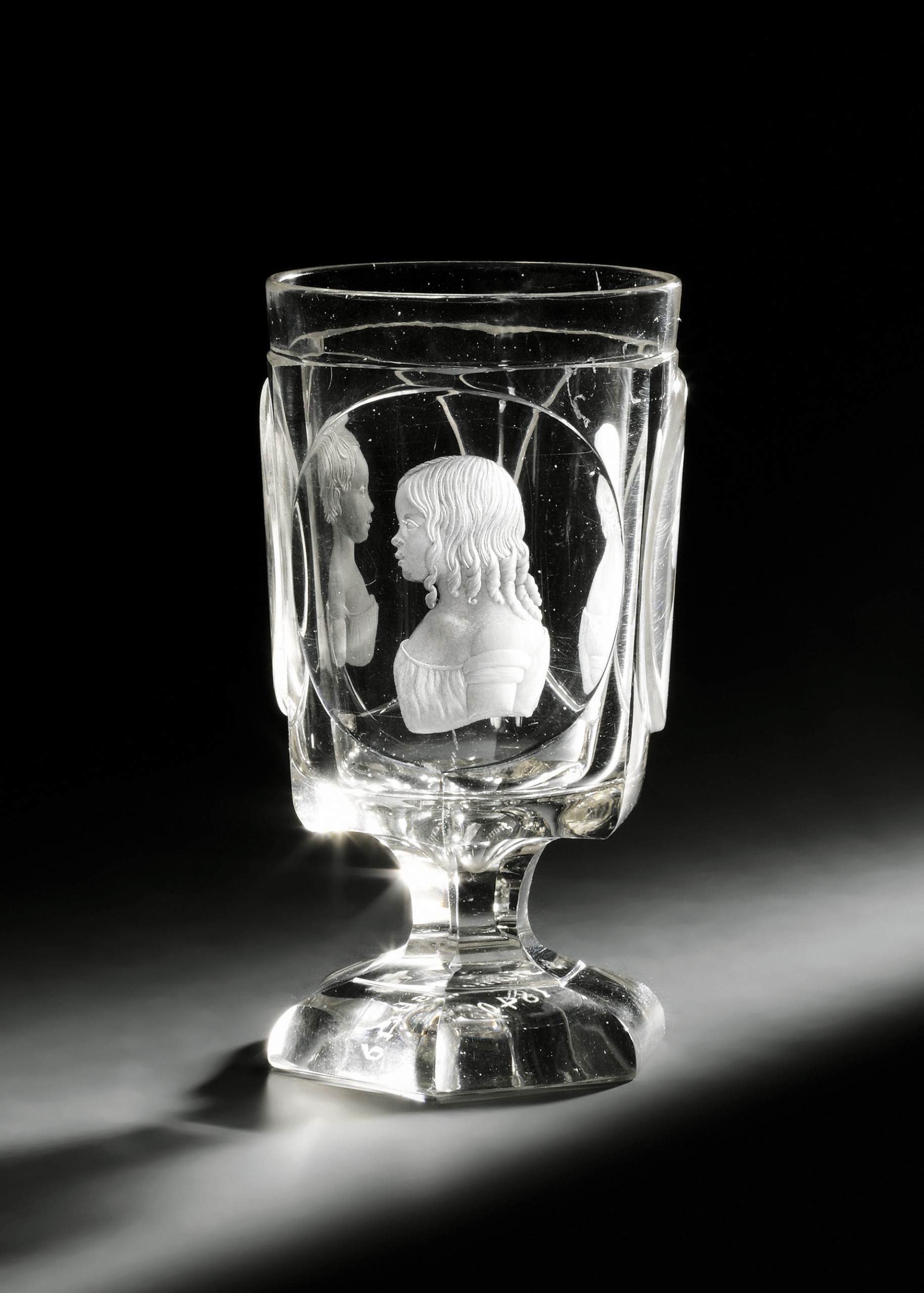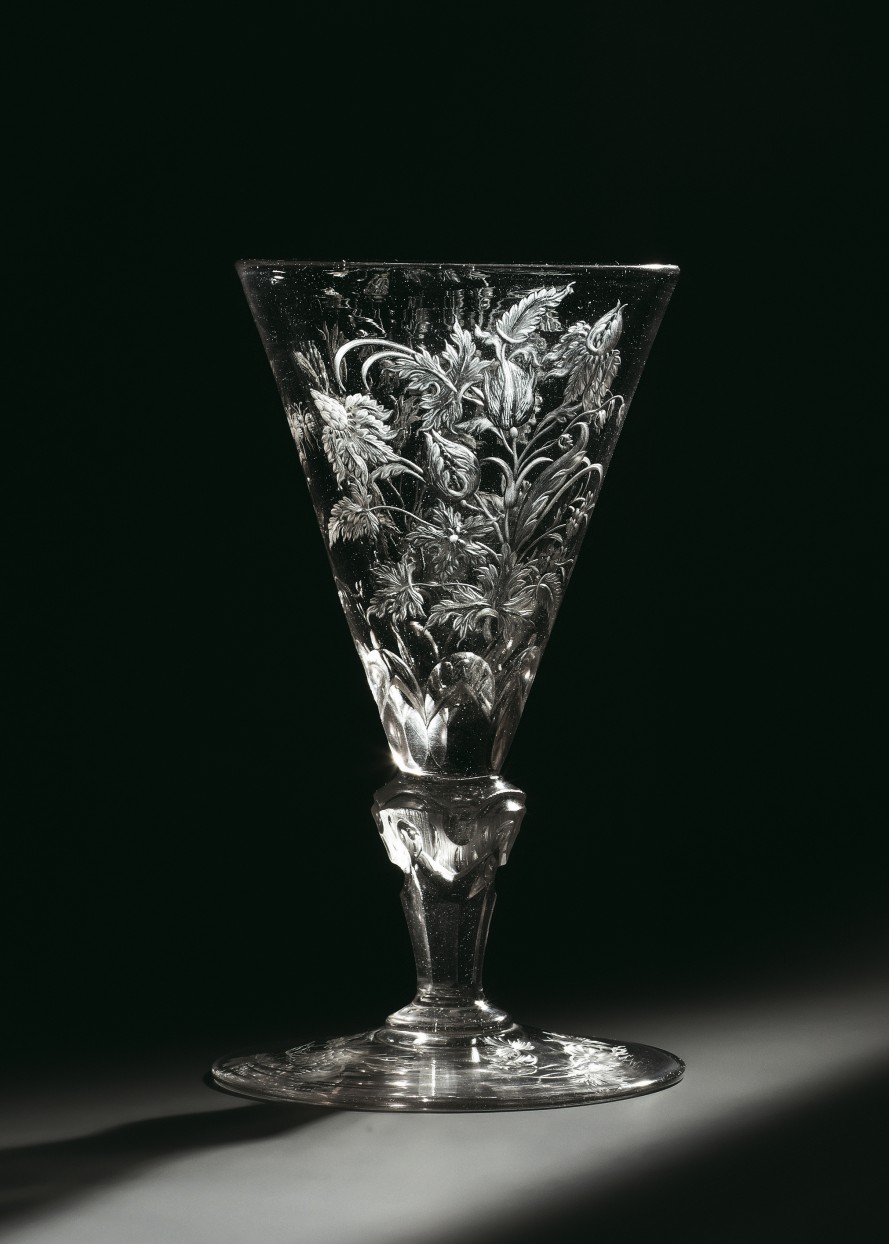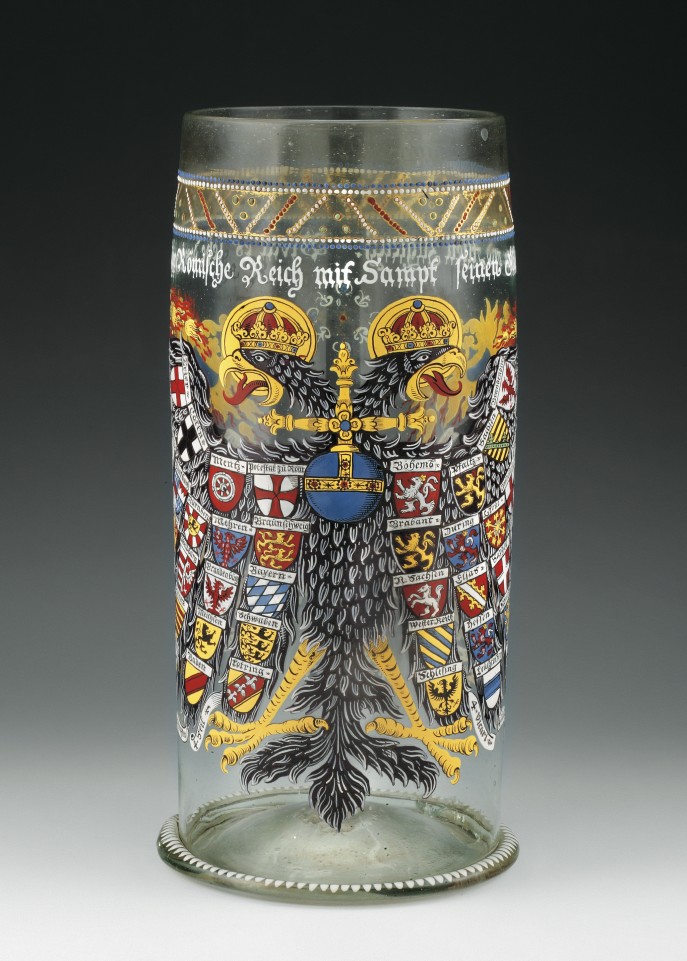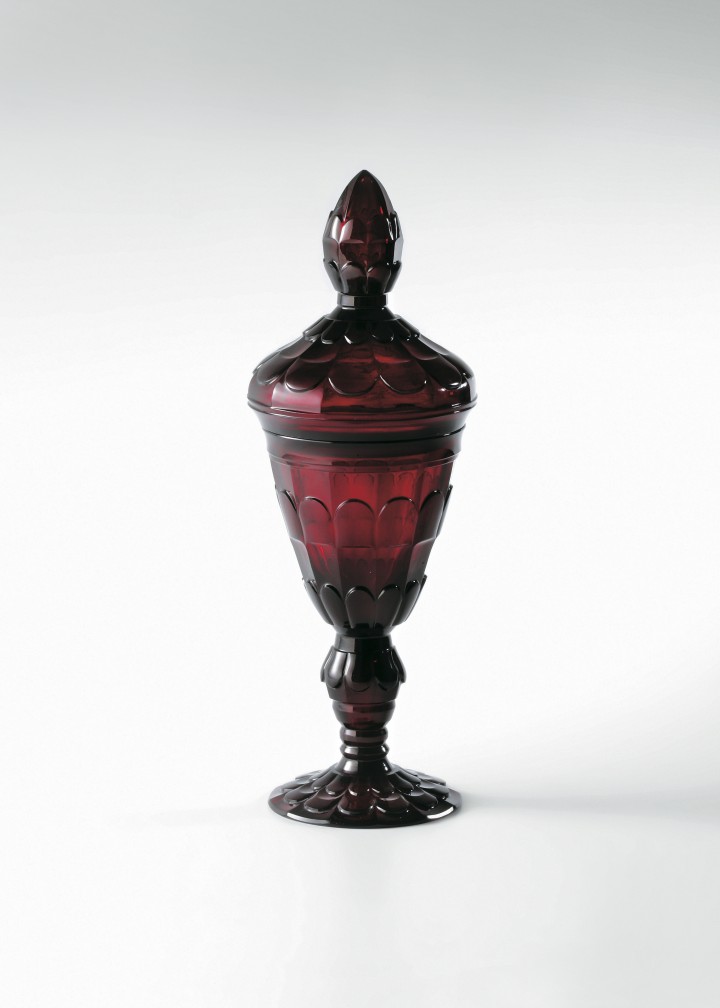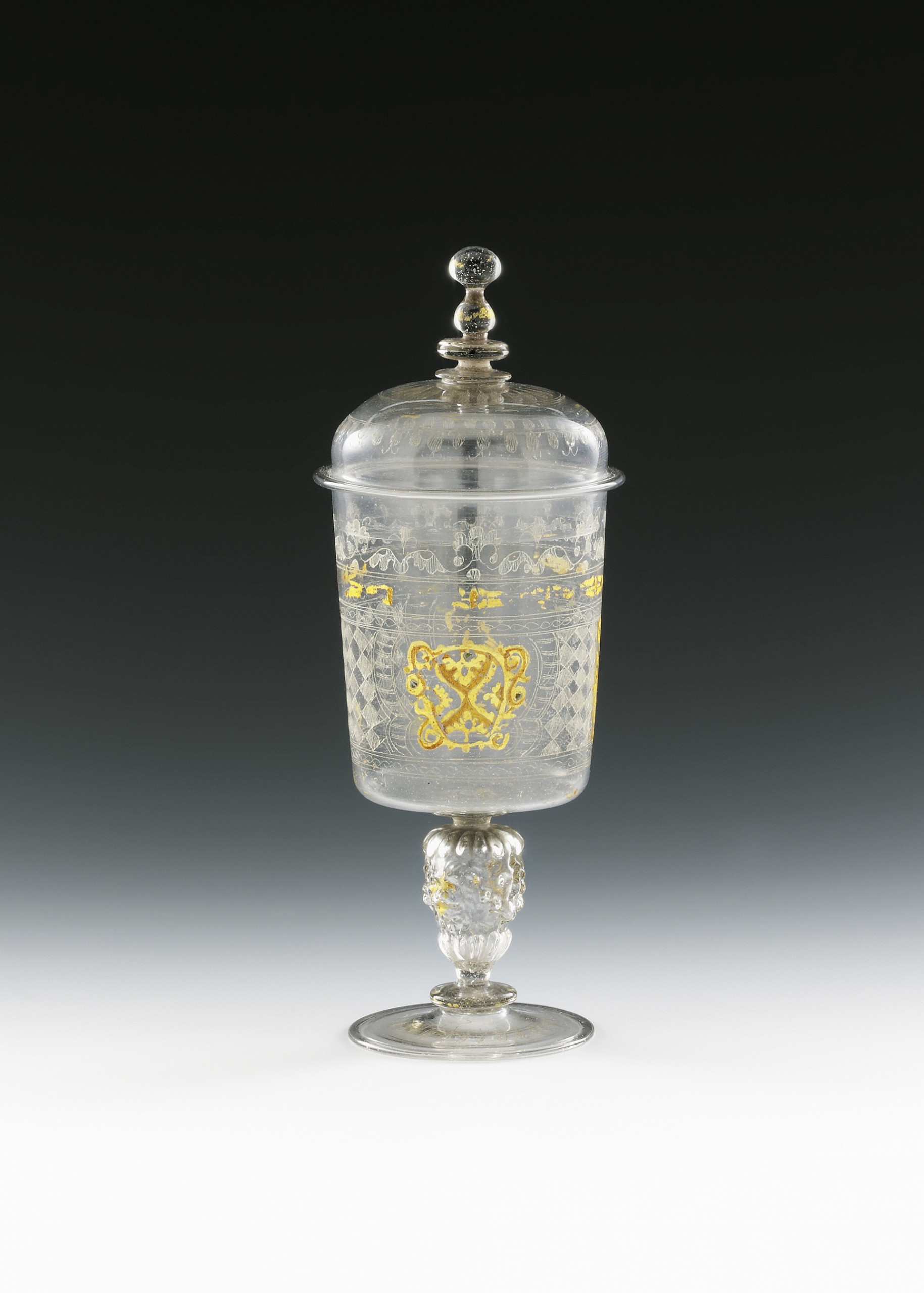Glass from 1500 to 1850
The second presentation from the Liaunig glass collection showcases a representative selection of 120 from the circa 300 pieces from the beginning of the 16th century to the middle of the 19th century, providing a window into the history of European glass art from its beginnings in Venice around 1500 to the masters of engraving of the Biedermeier period.
The exhibits on display from the various historical periods allow visitors to grasp the diverse and innovative techniques of craftsmanship and decoration developed over the centuries by famous as well as unknown masters to shape the material of glass.
Venice, as the cradle of Central European glass art, is famed not only for its delicate, colourless glass vessels, which were once as precious as gold and gemstones, but also for the many diverse styles of decoration, which have lost none of their fascination to this day. The splendour of the Renaissance is best represented by the tazza from the Medici Popes’ service. Rulers such as Ferdinand of Tyrol had to ask the Doge of Venice for the temporary loan of the famous glassmakers, as they were more or less confined to Murano. The glassworks at Hall-in-Tirol were the earliest and longest lasting north of the Alps to produce colourless glass according to the Venetian model. This facility was also the only one that worked with German glassmakers and did not suffer from the unreliability of hired Italians. The large individual pieces from Venice and Hall represented in the collection are worth particular mention here.
While this fine glass could only be etched with a diamond or painted, resourceful alchemists of the 17th century altered the glass flow in such a way that it was possible to produce a hard, thicker glass for engraving with a copper wheel, a technique that began its triumphal procession above all north of the Alps. The glass panel by Caspar Lehmann, who is considered the inventor of glass engraving, is an incunabulum of glass art in the collection and was on loan to the British Museum in London for 20 years.
But this was not the only innovation. Technical improvements in the form of water-powered grinding mills, for example, greatly eased the labours of such masters as the engravers of the Hochschnitt goblets in Silesia. The extremely labour-intensive works by Friedrich Winter in Silesia are, alongside rock crystal pieces of the time, among the most sought-after objects.
In addition to the pieces mentioned above, the highlights in the exhibition include the lidded goblet with a bear hunt by Heinrich Schwanhardt as well as the works by Johann Heinrich Balthasar Sang and Franz Gondelach, the master of three-dimensional representation. The bottle with a calligraphy inscription by Willem Jakobsz van Heemskerk and the diamond-point engraved glasses by Frans Greenwood are also impressive testimonies to great artistry.
The marbled Potsdam goblet is mentioned in the context of the alchemist and glass artist Johann Kunckel, who had a lasting influence on European glass art through his groundbreaking publication “Ars Vitraria Experimentalis oder vollkommene Glasmacher-Kunst” (Ars Vitraria Experimentalis or the Perfect Art of Glassmaking) and discovery of the method for producing gold ruby glass.
A further attraction is a goblet depicting Christ’s descent from the cross, by the most important engraver among the masters of the Biedermeier period, the glass cutter Dominik Biemann.
The Liaunig Collection is rounded off with the wonderful glasses by Gottlob Mohn and Anton Kothgasser, with their transparently painted views that evoke the Biedermeier period and the Congress of Vienna, which attempted a new order in Europe.
On the occasion of the presentation of the second part of the Liaunig Glass Collection, Volume II of the collection catalogue is being published, also written, like Volume I, by Regine Kovacek.
Collection "Glass from 1500 to 1850“
Curator: Regine Kovacek
28 April to 31 October 2024 ∙ Wednesday to Sunday 10 am to 6 pm
Museum Liaunig ∙ 9155 Neuhaus/Suha 41 ∙ Austria ∙
+43 4356 211 15
office@museumliaunig.at ∙ www.museumliaunig.at
